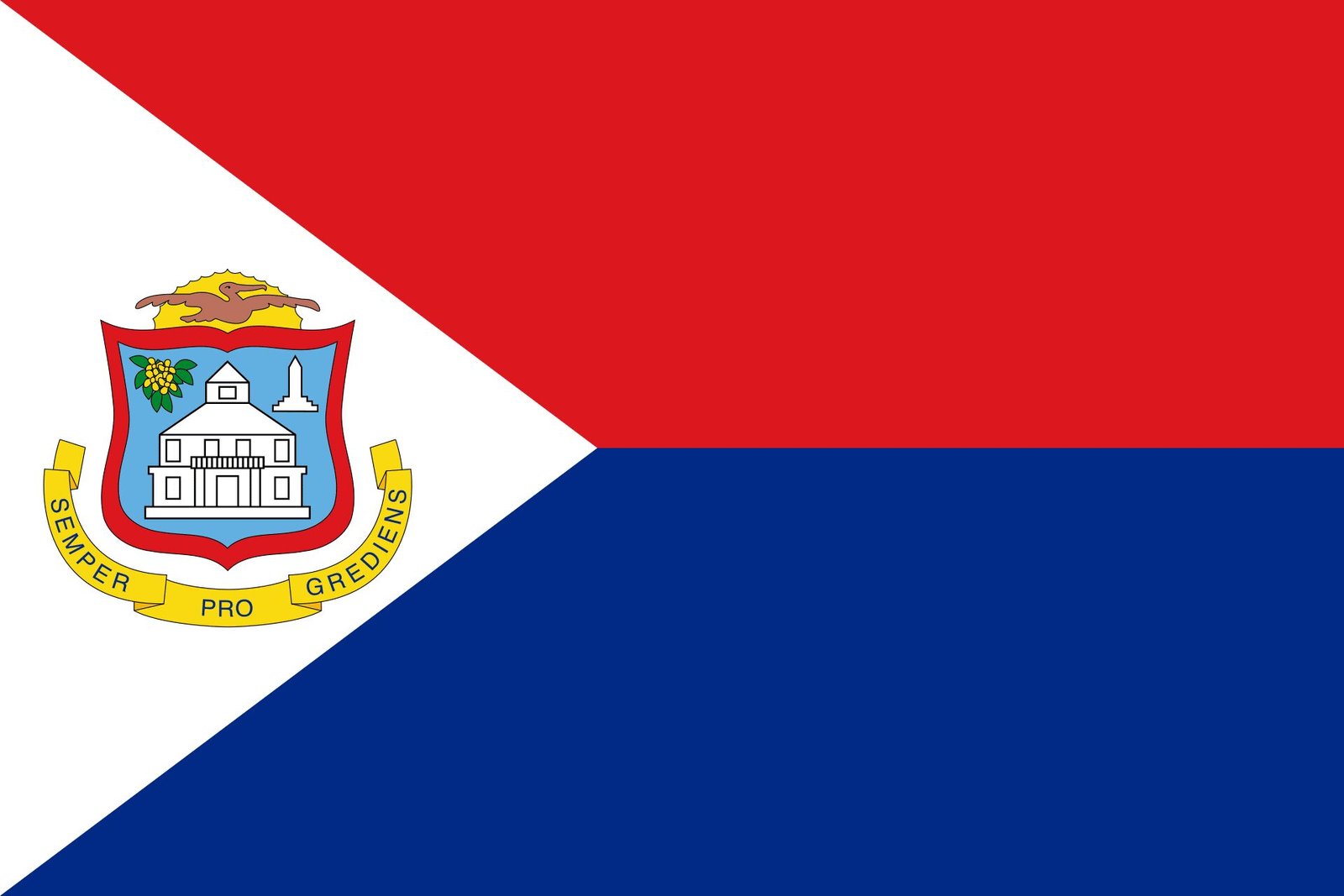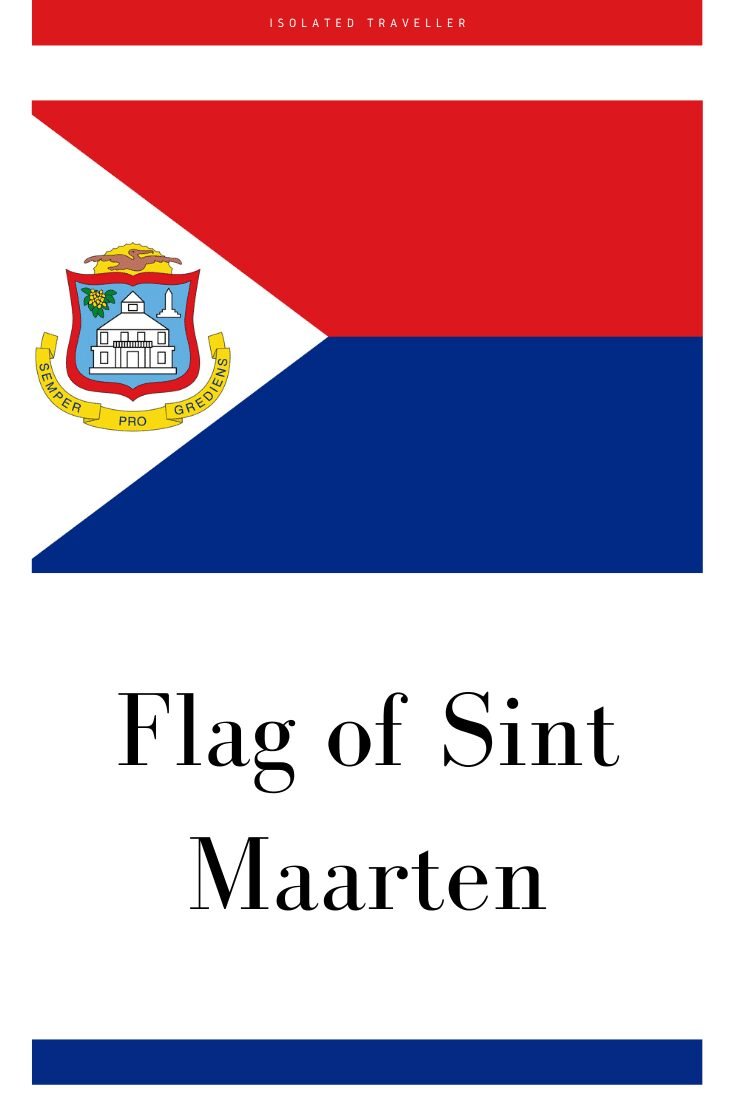Flag of Sint Maarten
The flag of Sint Maarten is a horizontal bicolour of red and white, with the national emblem of Sint Maarten centred on the dividing line.
In the middle of the flag, centred along the division line between the red and white fields, appears the coat of arms of Sint Maarten. The coat of arms consists of a shield surrounded by ten green stars edged in yellow; above it is a flaming yellow torch on a blue background, which represents liberty; below it are two palm branches crossing each other on three blue stripes representing unity, justice, and peace.
The National Flag of Sint Maarten.
The National Flag of Sint Maarten is a horizontal bicolour with a white background and a red stripe at the top. The flag was designed by a committee which was chaired by the then-Dutch Prime Minister Dries van Agt. The design process had been initiated by an act of Parliament on 20 April 1980. The Act established that “a law should be enacted by which the official flag, seal and anthem of Sint Maarten would be determined.”
In addition to being the national flag, it is also used as the merchant ensign and civil ensign.

Design
The flag of Sint Maarten is a white and blue rectangle with a red border, charged with three vertical stripes. The three stripes represent the country’s main languages: Dutch, French, and English. The triangle represents the blood shed by the people of St. Maarten during their struggle for independence from Britain in the late 18th century. The star represents the island’s status as an autonomous country within the Kingdom of Netherlands; while it was once part of St. Kitts and Nevis, it became independent in 2010 when those two islands were joined into one entity called St. Kitts & Nevis-Anguilla (SKNA).
- The official flag dimensions are 15 inches × 20.5 inches (38 cm × 52 cm) and its ratio is 2:3.
symbolism
The national flag of Sint Maarten is a horizontal bicolour of red and blue. The colours are said to symbolize the blood shed by the people of Sint Maarten for the freedom of the island, as well as its independence from France (blue) and Holland (red).
- The red stripe represents courage, strength and valour.
- The blue stripe signifies loyalty, peace, honesty and integrity.
History
Sint Maarten is a Caribbean island that was once part of the Netherlands Antilles. It has been an autonomous part of the Kingdom of the Netherlands since 2010, but for centuries it was a colony in its own right and still remains a member-state of that kingdom.
- The flag was officially adopted on 18 February 1985.
In 1493, Columbus discovered an island that he named Saint-Martin after his sponsor, King Ferdinand II; it was later renamed Sint Maarten in honour of St. Martin de Tours. The French established settlements on the northern end while the Dutch built theirs on the larger southern end. The two sides were divided by a strip of land called Neutral Ground which separated them until they were united under one government in 1648 when they became known as Saint-Martin/Sint Maarten. From then until 1816 the two sides coexisted under different flags but were still considered one unit politically and economically speaking—they even had their own currency!
After Napoleon’s defeat at Waterloo in 1815, France lost control over its colonies once again; this time Britain took over their protection instead. Due to their proximity to each other though, both halves continued to operate separately but under British oversight until 1833 when King William IV gave official permission for them both to fly separate flags: blue with a white cross for St.-Maarten/Sint Maarten and white with a red cross for Saint-Barthélemy/St.-Barthelemy.”
Conclusion
The flag of Sint Maarten has been adopted in 2013 and represents the island of St. Martin, which is divided between two countries: France on the south side and the Netherlands on the north side. It was designed by artists from both sides to represent this unique island’s characteristics: sun rays from sunrise over water represent peace; blue background symbolises sky as well as sea surrounding Sint Maarten; white star stands for hope, unity between two nations living there.


